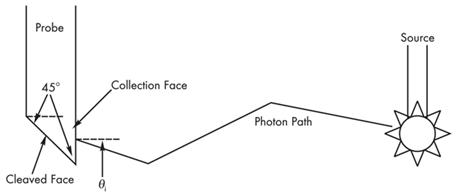- Joined
- May 24, 2017
- Messages
- 85
- Reaction score
- 87
I got the question right but I am not sure the specifics of why I would choose this answer. It was more of a gut response.
At what incident angle (θi) does a ray have to first hit the collection face to end up traveling directly up the fiber (up the page in Figure 1)?
A. 0° Correct Answer
B. 45°
C. 60°
D. 90°

At what incident angle (θi) does a ray have to first hit the collection face to end up traveling directly up the fiber (up the page in Figure 1)?
A. 0° Correct Answer
B. 45°
C. 60°
D. 90°

